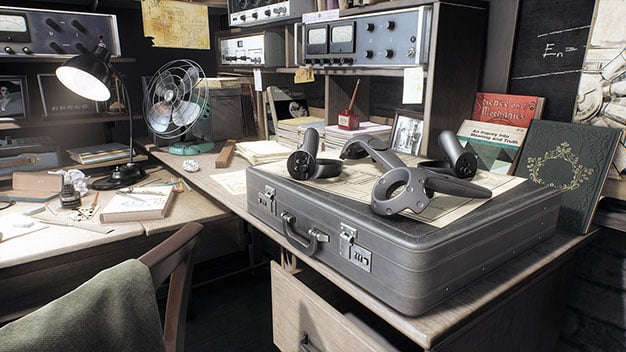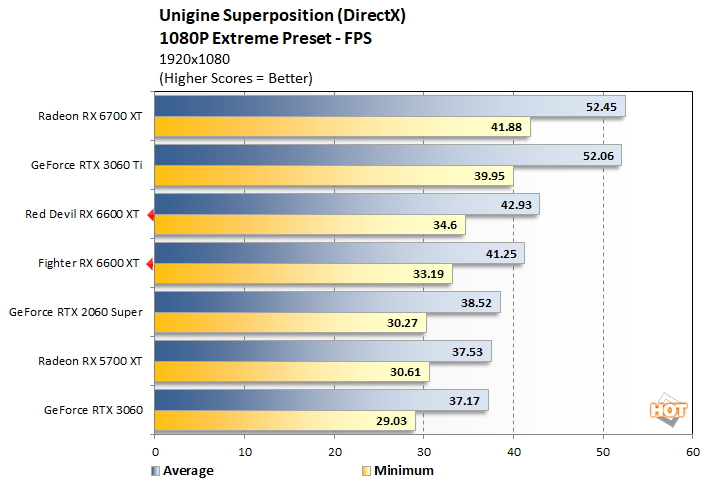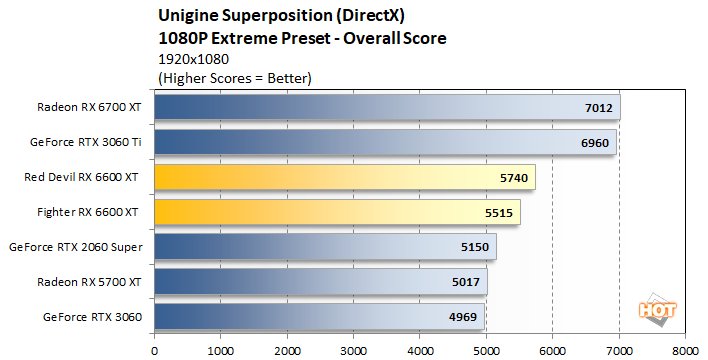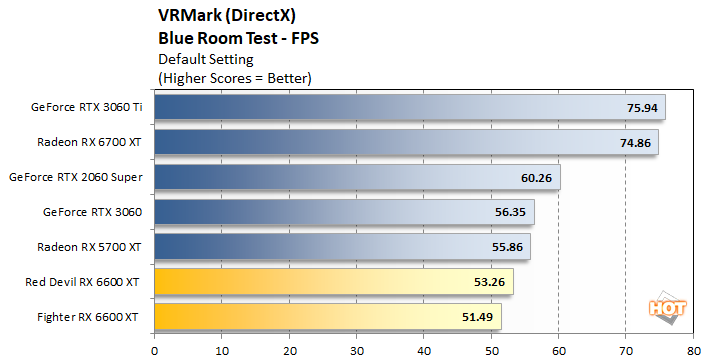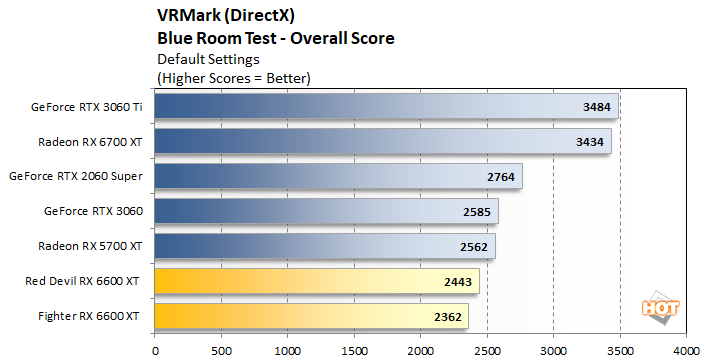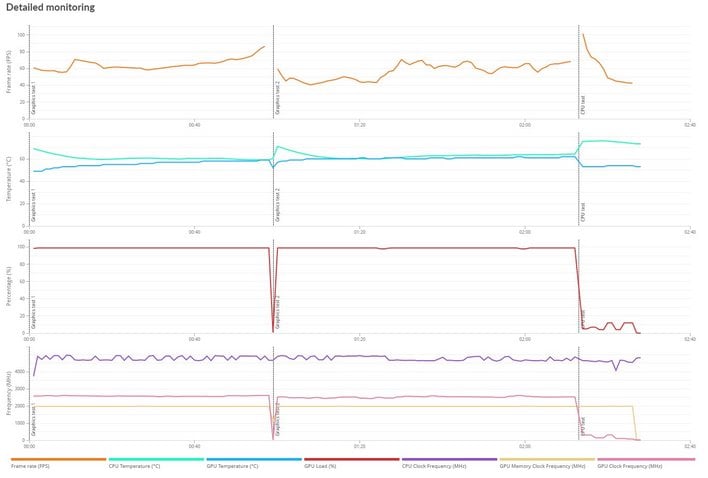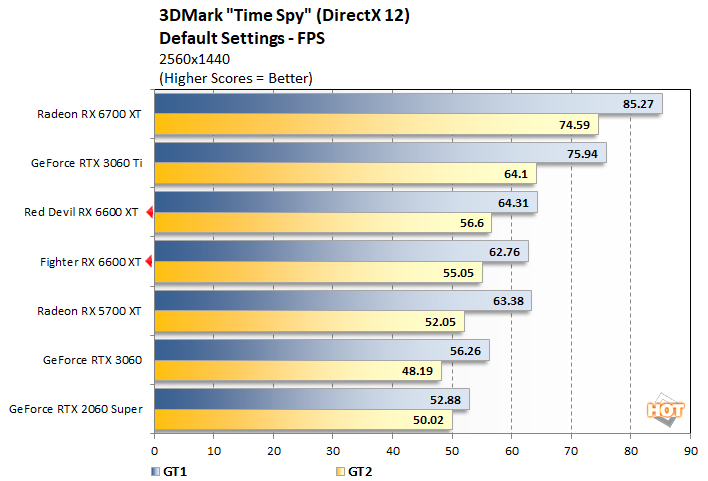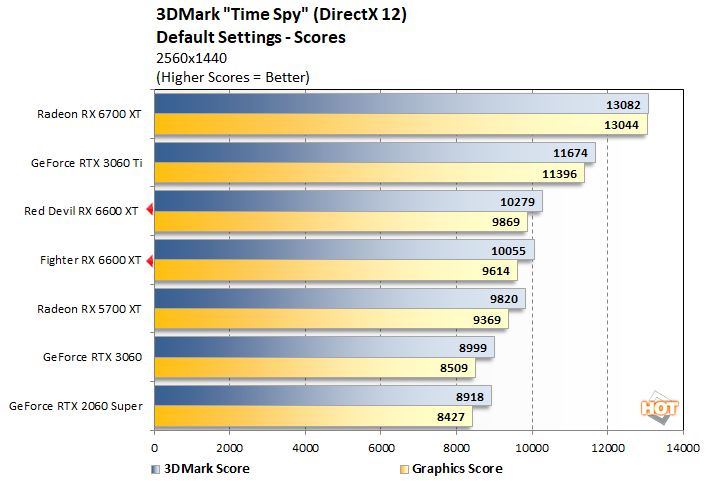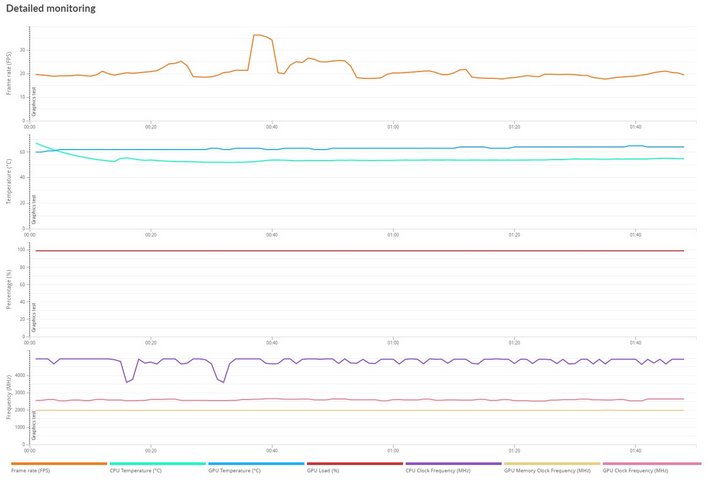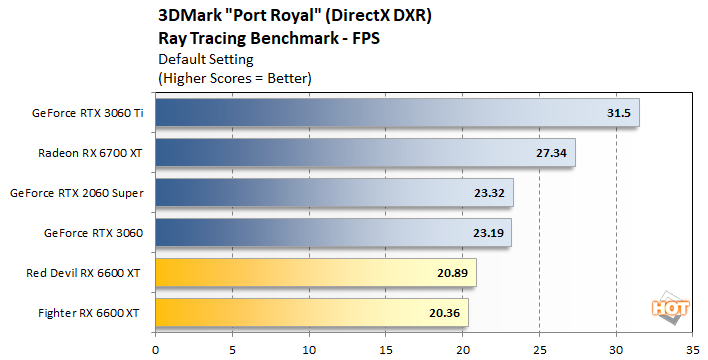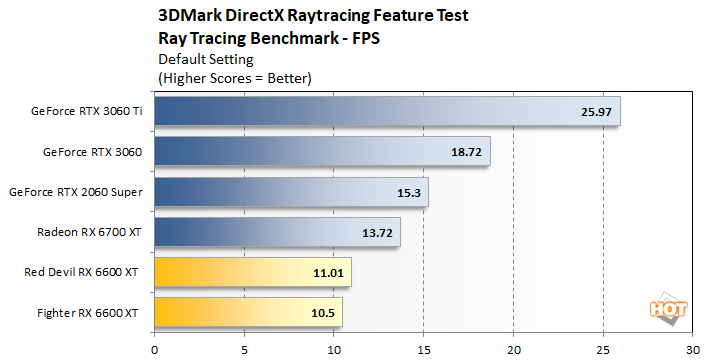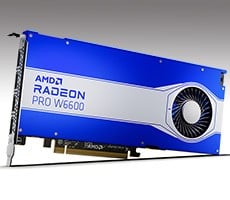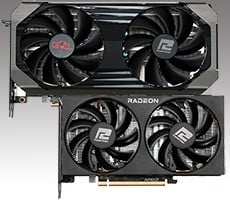Radeon RX 6600 XT Review: AMD RDNA 2 For Mainstream Gamers
How We Configured Our Test Systems: We tested the graphics cards represented in this article on a MSI X570 Godlike motherboard, equipped with a Ryzen 9 5950X and 16GB of G.SKILL DDR4 RAM clocked at 3,200MHz. The first thing we did when configuring the test system was enter the UEFI and set all values to their "high performance" defaults, then we disabled any integrated peripherals that wouldn't be put to use. The memory's clock was dialed in to its optimal performance settings using its XMP profile and the solid state drive was then formatted and Windows 10 Professional x64 was installed and fully updated. When the Windows installation was complete, we installed all of the drivers, games, applications and benchmark tools necessary to complete our tests. For all of the standard tests, the Radeon RX 6000 series cards were tested using their "Balanced" performance profile.
Our Test System Configuration:
| Hardware Used: AMD Ryzen 9 5950X (3.4GHz - 4.9GHz, 16-Core) MSI X570 Godlike (AMD X570 Chipset) 16GB G.SKILL DDR4-3200 Samsung SSD 970 EVO Integrated Audio Integrated Network Sapphire Nitro+ Radeon RX 6800 XT NVIDIA GeForce RTX 3060 Ti FE NVIDIA GeForce RTX 3060 FE NVIDIA GeForce RTX 2060 Super FE AMD Radeon RX 6700 XT AMD Radeon RX 5700 XT PowerColor Radeon RX 6600 XT Red Devil PowerColor Radeon RX 6600 XT Fighter |
Relevant Software: Windows 10 Pro x64 (21H1) AMD Radeon Software v21.8.1 NVIDIA GeForce Drivers v471.41 Benchmarks Used: VRMark 3DMark (Time Spy, Fire Strike, Port Royal, DXR) Unigine Superposition Crytek Neon Noir Metro Exodus Final Fantasy XIV Endwalker Gears 5 F1 2021 FarCry: New Dawn |
Unigine Superposition Benchmarks
Superposition is the latest benchmark from Unigine, powered by the UNIGINE 2 Engine. It offers an array of benchmark modes, targeting gaming workloads as well as VR, with both DirectX and OpenGL code paths. There is an extreme hardware stability test built-in as well. Unigine Superposition uses the developer’s unique SSRTGI (Screen-Space Ray-Traced Global Illumination) dynamic lighting technology, along with high quality textures and models, to produce some stunning visuals. We ran Superposition in two modes using the DirectX code path – 1080p Extreme and VR Future -- to compare the performance of all of the graphics cards featured here.Unigine Superposition's 1080P Extreme test has the PowerColor Radeon RX 6600 XT cards we tested finishing just above the previous-gen cards and the GeForce RTX 3060, but well behind the higher-end, current-gen offerings from AMD and NVIDIA. The Red Devil's higher GPU clocks give it a slight edge over the Fighter card as well, but the two cards perform similarly.
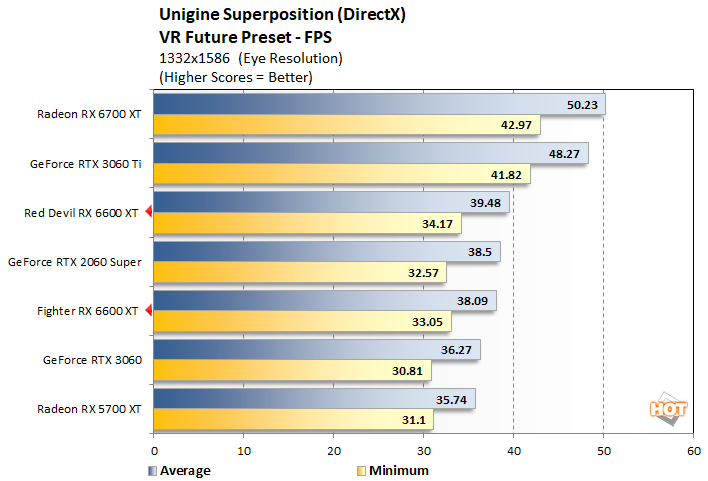
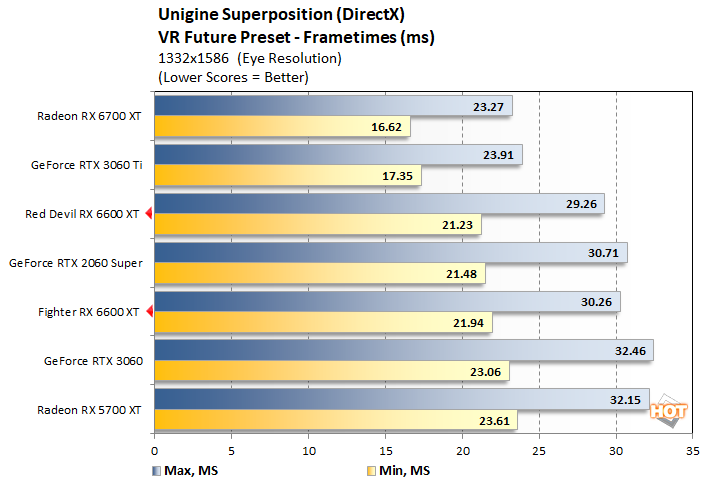
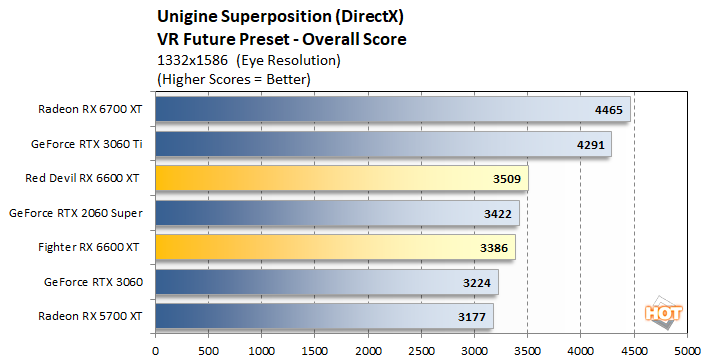
Superposition's VR Future benchmark illustrates part of the reason why GPU makers like AMD work with partners like PowerColor that will release customized, higher-performance variants of a particular CPU. In this test the PowerColor Radeon RX 6600 XT Red Devil's more robust design and higher clocks allow it to overtake the GeForce RTX 2060 Super, whereas the Radeon RX 6600 XT Fighter comes in just a notch behind. Both cards have no trouble dispatching the GeForce RTX 3060, though.
UL VR Mark Blue Room Benchmarks
UL's VRMark is designed to test a PC’s readiness for the HTC Vive and Oculus Rift virtual reality headsets. The benchmark does not, however, require that one of the headsets is attached to the PC to run and it uses an in-house graphics engine and content to ensure comparable results between different platforms. We ran the "Blue Room" VRMark test at defaults settings here, which is currently the most taxing test offered by the tool.Our results with VRMark show the PowerColor Radeon RX 6600 XT cards trailing all of the other cards we tested by a small margin. This is one test that is sensitive to real-world memory bandwidth, and the 6600 XT ends up falling behind by a few percentage points.
UL 3DMark Time Spy DX12 Benchmarks
3DMark Time Spy is a synthetic DirectX benchmark test from UL. It features a DirectX 12 engine built from the ground up to support bleeding-edge features like asynchronous compute, explicit multi-adapter, and multithreading. Time Spy is designed to test the DX12 performance of the latest graphics cards using a variety of techniques and varied visual sequences. This benchmark was developed with input from AMD, Intel, Microsoft, NVIDIA, and the other members of the UL Benchmark Development Program, to showcase the performance and visual potential of graphics cards and other system resources driven by close-to-the-metal, low-overhead APIs. In the DX12-based 3DMark Time Spy benchmark, the PowerColor Radeon RX 6600 XT cards jumped right back into the middle of the pack, outrunning the previous-gen cards and the GeForce RTX 3060. Once again though, stepping up a notch to a higher-end card like a Radeon RX 6700 XT or RTX 3060 Ti yields significantly better performance.UL 3DMark Fire Strike Ultra Benchmarks
3DMark Fire Strike has multiple benchmark modes: Normal mode runs at 1920x1080, Extreme mode targets 2560x1440, and Ultra mode runs at a 4K resolution. GPU target frame buffer utilization for normal mode is 1GB and the benchmark uses tessellation, ambient occlusion, volume illumination, and a medium-quality depth of field filter. The more taxing Extreme mode targets 1.5GB of frame buffer memory and increases detail levels across the board. Ultra mode is explicitly designed for high-end and CrossFire / SLI systems and cranks up the quality even further. GT 1 focuses on geometry and illumination, with over 100 shadow casting spot lights, 140 non-shadow casting point lights, and 3.9 million vertices calculated for tessellation per frame. GT2 emphasizes particles and GPU simulations.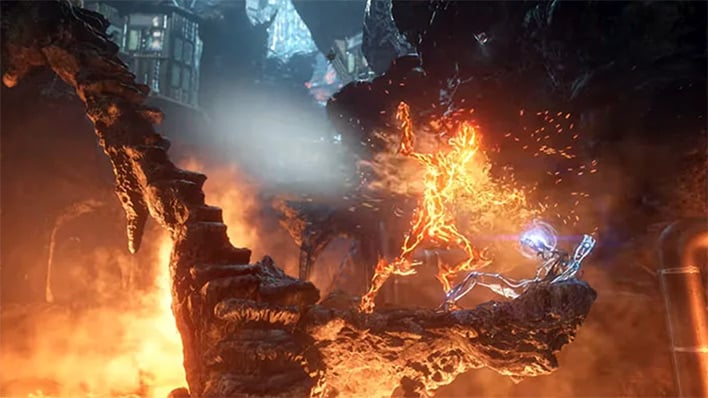
3DMark Fire Strike
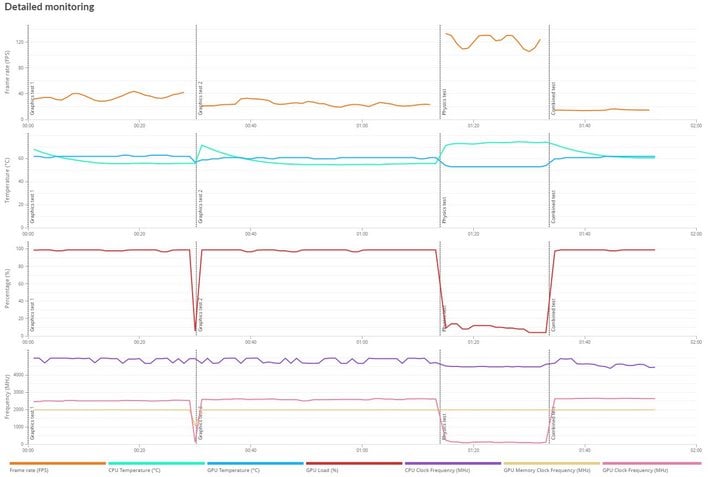
Fire Strike Radeon RX 6600 XT Detail
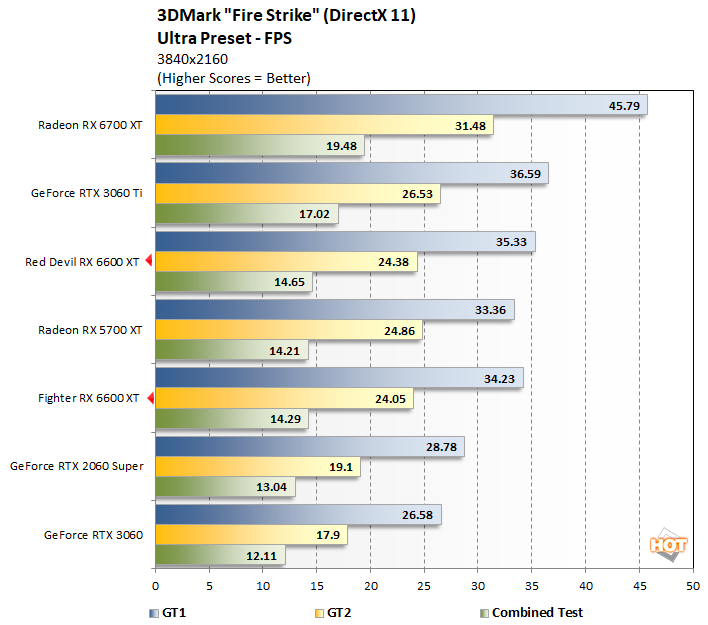
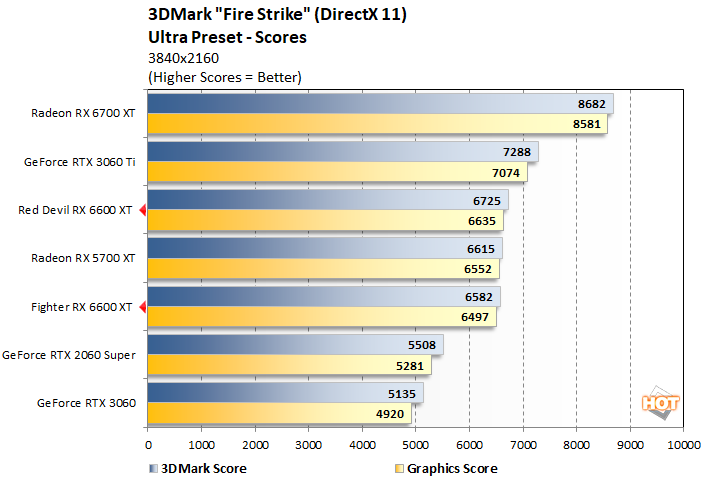
The Fire Strike Ultra test has the PowerColor Radeon RX 6600 XT cards sandwiching the Radeon RX 5700 XT. The higher clocked Red Devil finished slightly ahead of the 5700 XT, and the Fighter just a bit behind. Both cards were significantly faster than the GeForce RTX 2060 Super or RTX 3060 in this test, however.
UL 3DMark Port Royal Ray Tracing Benchmarks
Port Royal was released earlier this year as an update to UL’s popular 3DMark suite. It is designed to test real-time ray tracing performance of graphics cards that support Microsoft DirectX Raytracing, or DXR. Although DXR is technically compatible with all DX12-class GPUs, the graphics card must have drivers that enable DXR.
We also experimented with the DirectX Ray Tracing Feature test, which was recently released as an update to 3DMark...

